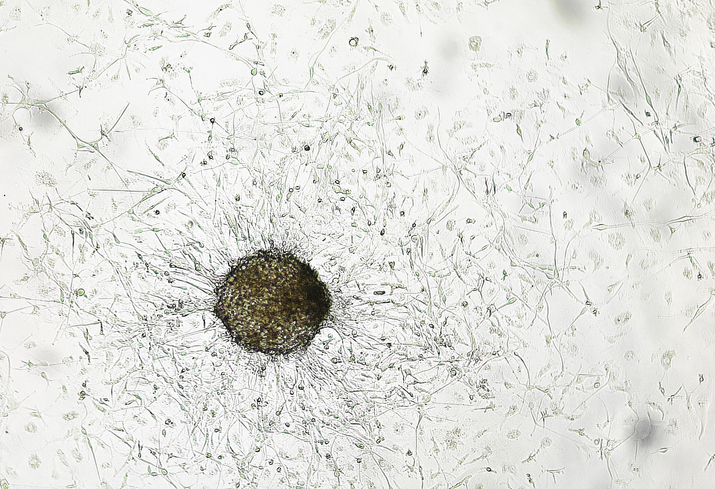
Researchers have recently found a compound that can eradicate drug-resistant glioblastoma-initiating cells (GICs). This compound, discovered by a collaborative group of Hokkaido University, FUJIFILM Corporation, and the National Institute of Advanced Industrial Science and Technology (AIST) scientists, could potentially be used to eradicate refractory tumors with minimal toxicity. This work was published on September 10 in Neuro-Oncology.
Glioblastoma patients going through radiation and chemotherapy typically have a poor prognosis, with the median survival period of patients with the malignant glioma being roughly 15 months. Despite the extensive research into new drugs and therapies, treatment options for glioblastoma patients have limited efficacy. One factor that contributes to this challenge is that there is a lack of options for killing the cancer stem cells, or GICs, that can form tumors and are resistant to chemotherapies and radiation.
Background of the Glioblastoma Research
In this study, the researchers first cultured human GICs that have resistance to temozolomide (TMZ), a drug commonly used to treat glioblastoma. They then used Fujifilm’s compound library to conduct a high-throughput drug screening to find compounds that can specifically target and differentiate the GICs from normal cells such like astrocytes and neural stem cells. Using cytotoxic activities, expressions of different cell markers, and tumor-suppressing actions as indicators, the team evaluated the efficacy of each potential treatment.
After carefully analyzing each agent, the researchers identified compound 10580 to be successful in damaging or killing GICs. This compound’s mechanism of action involves the inhibition of dihydroorotate dehydrogenase (DHODH), an enzyme required to synthesize pyrimidine that is located in the inner mitochondrial membrane. This study also found that compound 10580 decreased the overall expression of stem cell factors in GICs, indicating further components of its biological mechanism.
READ MORE: Blood Test May Eventually Speed up Brain Cancer Diagnosis
When administered orally to mouse models of the disease, the compound demonstrated similar therapeutic qualities. Specifically, the compound was found to induce cell cycle arrest, decrease stem cell factor expression in the GICs, and prevent tumorigenesis. These mice showed expressed no toxic side effects from compound 10580, indicating that the drug is not harmful to normal, healthy cells.
“Compound 10580 is a promising candidate for developing drugs against glioblastoma and other recurring cancers,” explained study leader Toru Kondo of Hokkaido University’s Institute for Genetic Medicine Further technological developments of a drug delivery system or 10580 derivatives, which can cross the blood-brain barrier, are needed,” says who led the study.
“In this study, we identified 10580 as a promising new drug against GICs. Given that normal tissue cells, in particular brain cells, tend to use the alternative salvage pathway for pyrimidine synthesis, our findings suggest that 10580 can be used for glioblastoma therapy without side effects,” concluded the study’s authors.
Researchers have found a compound effective in killing #chemotherapy-resistant #cancer cells, raising hopes of producing drugs capable of eradicating refractory tumors. https://t.co/1uXLv9EsFP
— Hokkaido University (@HokkaidoUni) October 18, 2019







 © 2025 Mashup Media, LLC, a Formedics Property. All Rights Reserved.
© 2025 Mashup Media, LLC, a Formedics Property. All Rights Reserved.